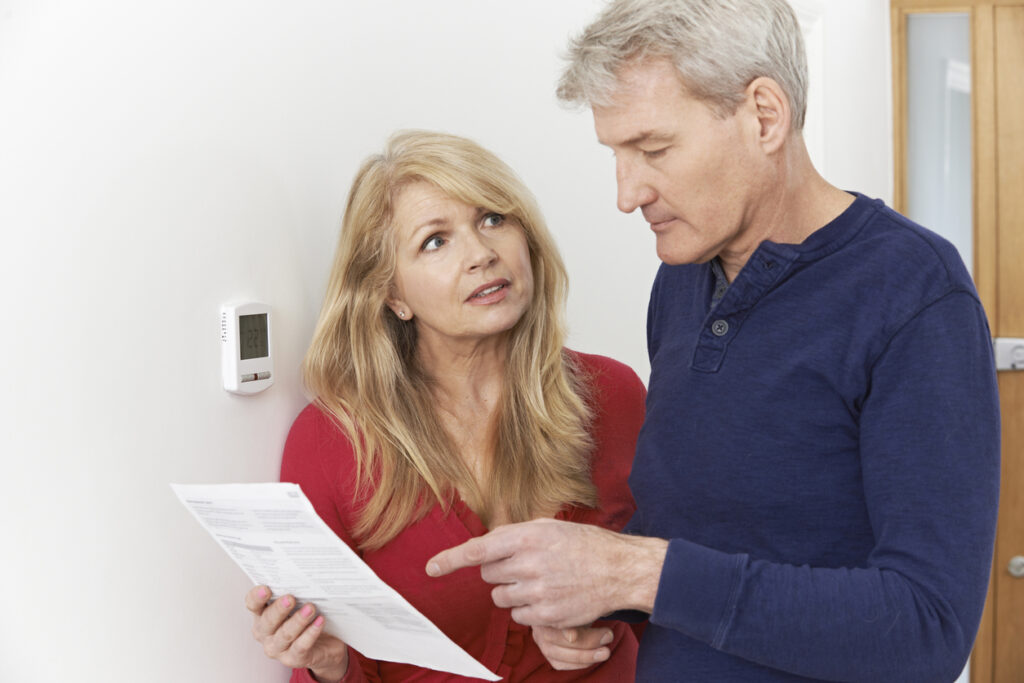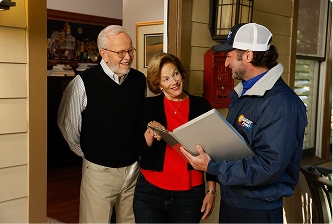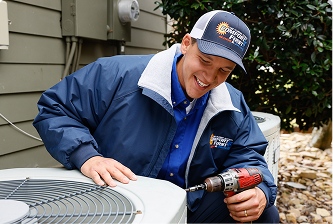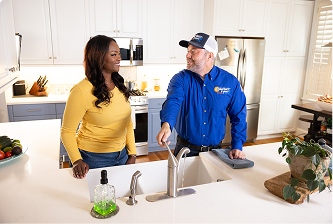
Your thermostat is the brain of your heating and cooling system. When it stops working correctly, it can make your entire home feel uncomfortable and put extra strain on your HVAC equipment. Knowing the signs of a faulty thermostat early can save you money, reduce wear on your system, and keep your home at the right temperature. Below, we’ll go over common bad thermostat symptoms, how to tell if your thermostat is bad, and when it’s time to replace it.
Thermostat Not Responding or Incorrect Readings
If your thermostat shows 72 degrees but the room feels much warmer or colder, the sensor may not be reading the air right. This can make your HVAC system turn on and off at the wrong times and keep your home from staying comfortable.
Another clue is a slow or unresponsive thermostat. If you have to press buttons more than once, the screen lags, or nothing happens when you change the temperature, it could be failing. A blank display or odd error codes can also mean loose wiring, weak batteries, or worn-out parts.
Unusual HVAC Cycling Patterns
A bad thermostat can make your HVAC system turn on and off too often. This constant starting and stopping puts extra stress on the equipment and can drive up your energy bills.
On the other hand, the system might run nonstop without ever reaching the temperature you set. This usually means the thermostat isn’t signaling the system to shut off. You might also notice big temperature swings or long delays before the air starts heating or cooling, which are all signs of thermostat issues affecting your HVAC system.
Incorrect HVAC Behavior
If the heat kicks on when you’ve set the thermostat to cool, or the other way around, it’s a clear sign something’s wrong with the thermostat’s wiring or internal controls.
Another clue is when nothing happens after you change the temperature. If you raise or lower the setpoint and the HVAC system doesn’t respond, the thermostat may not be sending the right signal. When these problems show up together, it can make the entire system seem “confused,” running at the wrong times or not running at all.
Rising Energy Bills Without Usage Change
If your utility bills suddenly climb but you haven’t changed how often you use your system, your thermostat could be the reason. A faulty thermostat can make your HVAC run longer than it should or cycle at the wrong times, which wastes energy.
When the system works harder to reach the set temperature because of bad signals from the thermostat, it drives up costs and adds wear to your equipment. Catching this early can save you money and prevent bigger HVAC problems down the line.
Old or Outdated Thermostat Models
A thermostat that’s been on the wall for 10 to 15 years can start to cause problems, even if it still turns the system on and off. Many older units don’t have programmable schedules or smart controls, which means the HVAC system runs more than it needs to and wastes energy.
Outdated models can also struggle to work with modern systems like heat pumps or variable-speed equipment. Over time, the sensors inside can wear out, leading to inaccurate readings and uneven heating or cooling. If your thermostat is years old and showing these issues, it may be time to upgrade and discover the benefits of a smart thermostat.
Frequently Asked Questions
Can a faulty thermostat affect air conditioning?
Yes, a bad thermostat can cause your AC to short-cycle, run nonstop, or fail to cool the home evenly.
Should I replace or repair a bad thermostat?
Minor issues like loose wires or low batteries can be fixed, but older or failing units are usually better off replaced.
How do I know if my thermostat is malfunctioning?
If your HVAC system won’t turn on, cycles too frequently, or shows incorrect temperatures, your thermostat may be malfunctioning.
Can low batteries cause thermostat problems?
Yes, low batteries can cause your thermostat to stop working or send incorrect signals to your HVAC system. Replacing your thermostat’s batteries is an easy way to troubleshoot thermostat issues.
How often should thermostats be replaced?
Thermostats typically last about 10 years but may need replacement sooner if outdated or malfunctioning.
Request Thermostat Services From Comfort First
If you’re dealing with thermostat issues, Comfort First Heating & Cooling can help you get your system back on track. Our highly trained technicians offer same-day service, upfront pricing, and work on all HVAC brands. We back our installations with strong guarantees and always treat your home with care.
Contact Comfort First Heating & Cooling today to schedule thermostat repairs or replacement and restore reliable comfort to your home.



















